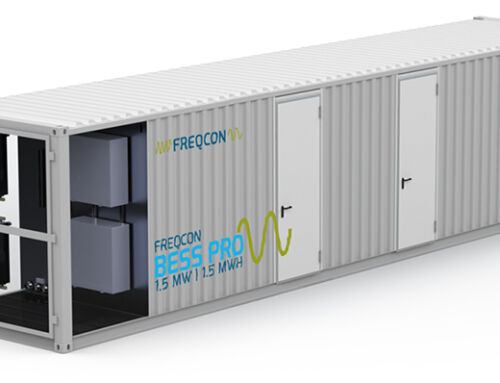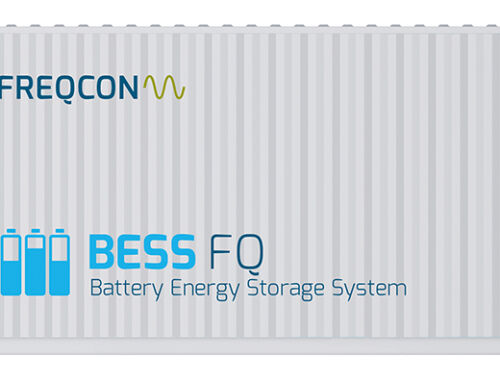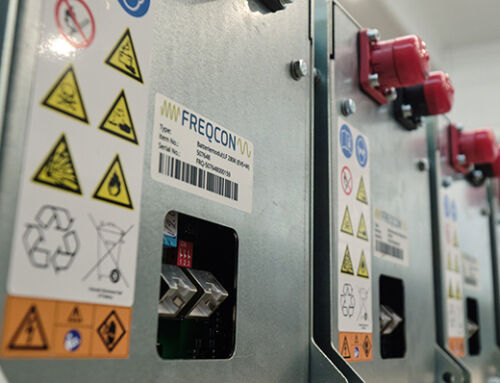FREQCON BESS EV
Together with Mercedes-Benz Energy, Freqcon has developed a highly secure energy storage solution for energy producers and applications in the industrial environment.
This very special solution in terms of sustainability for the environment and image consists of the proven MSC hybrid inverter and battery modules with second-life vehicle batteries from Mercedes-Benz Energy, a battery management system and sophisticated protection elements.
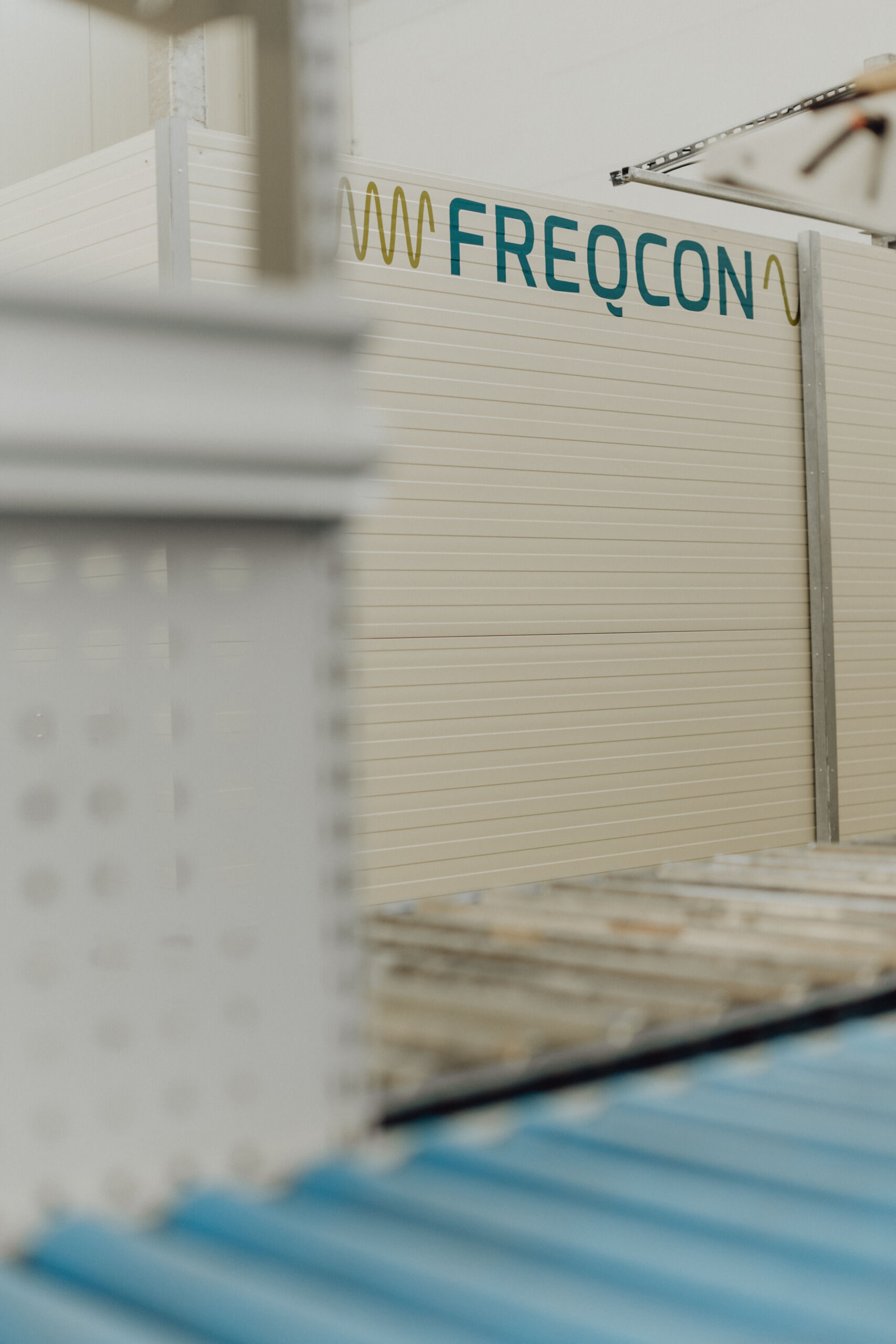
Sales Manager Mike Ritter on the subject of FREQCON BESS EV
Why actually use second-life batteries?
And what challenges and opportunities does such use bring in the context of battery storage solutions?
We asked our sales manager Mike Ritter exactly that.
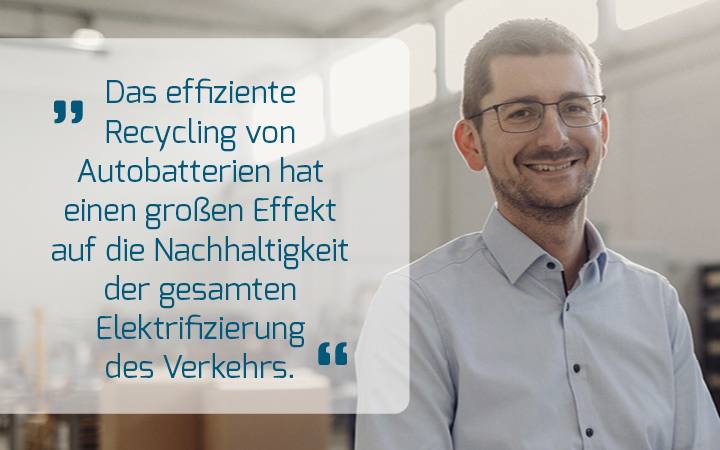
Our BESS EV is a battery storage system based on second-life car batteries. The area of battery storage based on car batteries, second life car batteries, is becoming increasingly important, even if it has already achieved a certain significance, but in perspective, enormous quantities of vehicle batteries will simply come back from the vehicle market from various manufacturers and a relevant proportion of these vehicle batteries will still be very suitable for use in stationary storage for several years. To be used for grid-serving services such as primary or secondary route power. But it is just as conceivable for UPS systems where they do not see an extra number of cycles or do not necessarily see so many cycles. This makes a lot of sense, because otherwise they would be recycled or disposed of, even though they are still of good enough quality.
Where do the batteries for a second-life battery storage system actually come from?
Batteries in the vehicle sector are sorted out, can be sorted out as soon as they have a certain loss of capacity. Batteries lose capacity simply due to ageing, regardless of whether they are used or not. And then they also lose storage capacity through use. The same applies to fast charging or fast discharging. Both reduce the capacity faster than if it were charged or discharged with lower currents.
Classic charging and discharging, as it takes place in the vehicle sector, i.e. I drive to the charging station and I drive it on the highway, corresponds to fast discharging and charging.
If the battery is charged slowly, over several hours, six hours, eight hours, perhaps ten hours, depending on how large the battery is, this is a very well-tolerated charge for a vehicle battery. This is much less stressful than someone working in the field, for example, who drives 400 kilometers in their car every day and then charges for 20 minutes in between and then charges from 0 or 10 percent to 80 percent in that time. This is fast charging, which is difficult for batteries. I wouldn’t say it’s harmful, but it does reduce the service life. The higher the currents, the higher the temperatures. And the higher the temperatures, the greater the ageing.
In the daily use of an electric car, it already makes a difference if there are small capacity losses. Especially for people who are dependent on the range. So such a battery with 80% capacity is replaced, even though it is actually “still good”. Just not enough for this one application. This means that there are returns that can still be put to excellent use for a second use
Why continued use of vehicle batteries is so important
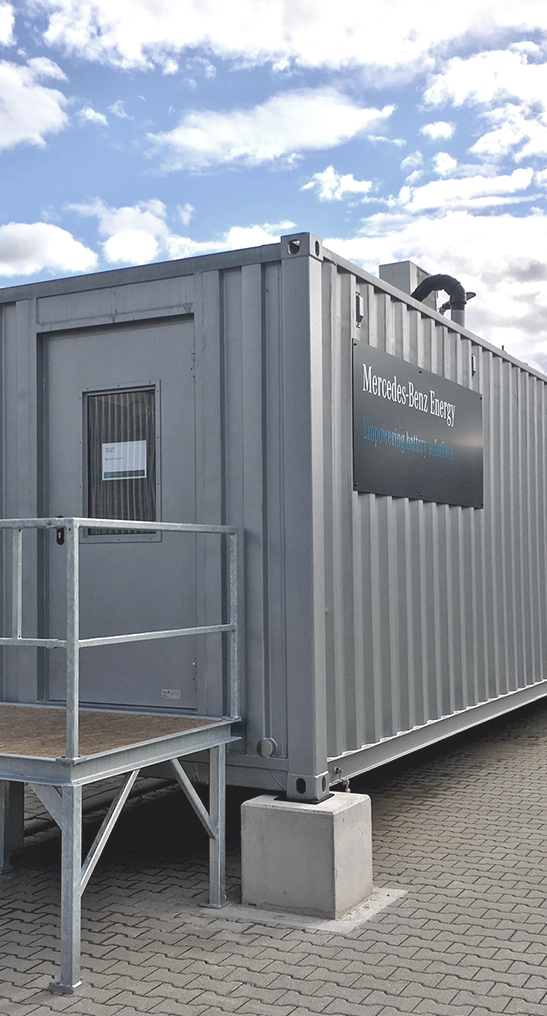
This second use, this further use, hasa major effect on the sustainability of the entire electrification of transportation.
The returns have to be sorted into segments and can then be sorted according to how good they are, how much capacity is still in them and the condition of the battery modules that come out of the car.
Some will go straight into recycling, others will be offered for storage applications.
It should be noted that we are talking about enormous quantities. So if we’re now talking about maybe a few thousand coming back a year, we’re talking about millions of batteries coming back in five years, six years, seven years.
Simply shoving them all into the scrap press is not sustainable. There are various approaches to reusing such batteries: from home storage to large-scale storage.
It is important to bear in mind that such a battery is not new and that the storage system in which it is to be installed is designed in such a way that it is worth using one or more batteries for several years. If a new storage system is designed and built, it is often intended to last for 10 to 15 years with new batteries, whereas a vehicle battery is only used for two to five years and is then finally recycled.
The biggest advantage that vehicle batteries have or will have is a lower purchase price than new batteries.
Current solutions for battery returns
There are approaches from battery suppliers who are currently positioned in such a way that they either build the returns into stationary storage systems themselves and then sell them to the market as a storage system, together with our frequency converters, or sell the modules to other system integrators and then either build the storage systems from the modules or open up the modules, i.e. the battery that comes from the car, take them apart and then sort them even more finely. There are also several cells inside. And the cells may also age differently within this module. And if you then go one level deeper and then say, within the complete module I look at what is still how good and pack all the good ones and take them for the application and all the less good ones I take for something else or bring them to recycling. Of course, this involves more effort. Which must then also pay off. And that is also a question of the price for which these modules are sold or offered. And as I said, as far as I know, no supplier of electric vehicles has yet drawn up a very clear long-term strategy on how they want to deal with batteries. Also because a lot has to be revealed first. There will certainly be forecasts and expectations as to what will be returned in what form and how, as well as a lot of cost estimates and evaluations.
But the right way forward in the long term has yet to be found. Perhaps there is no one right way.
Subsidies as the linchpin
It will also be decisive whether there is a certain obligation or promotion from the regulatory side at national and international level that obliges us to reuse the batteries that come out of the car. Which I think would make a lot of sense, purely for sustainability reasons, but I haven’t seen or heard anything in this direction yet. But that doesn’t necessarily mean that it doesn’t exist. Otherwise I can imagine, if there is more money for recycling or only a little less than for selling the modules themselves, that batteries that are actually still good will go straight into recycling or, of course, into disposal. That would not be a good sign for the future and, in my view, would massively miss the whole point of the energy transition.
Our FREQCON solution for second-life batteries
We at Freqcon have already done a lot in the field of vehicle batteries, i.e. battery storage systems based on vehicle batteries. We have already worked with several vehicle manufacturers, such as Audi, VW, Skoda and, of course, Mercedes-Benz. But we have done this at different levels of integration. We have built a storage system with Audi e-tron batteries for one of our customers, an energy supplier in Germany, which has a capacity of around 900 kilowatt hours. That was twelve car batteries. We installed these together with our frequency converter for one megawatt in a 20-foot standard sea container. We designed the entire system, including the shelving system, control system, cooling system, consideration for insertion, battery replacement, which is elementary for second life use, with shorter lifetimes in the second life, we designed it, thought about it together with our partners and then built such a storage system.
What is always important with such constructions is that vehicle batteries that are no longer in order, i.e. have actually reached the end of their life in the storage tank, can be replaced relatively easily on site without incurring excessive costs. This is very important with a shorter battery life.
An important consideration with this type of memory is compatibility with successor models.
Successor models, modules for the batteries, which will always be available at certain intervals, may have different communication. But even these can still be implemented with our frequency inverters. This means that we are very flexible when it comes to the voltage range and our frequency conversion.
We work with DC-DC controllers, i.e. adjusting the DC input voltage to a level in our frequency inverter on the DC link.
And that means that in principle, purely in terms of voltage, we can connect any car battery that is currently available out there to our inverter. We at Freqcon are flexible and competent because we have the software, i.e. our frequency inverter software, in our own hands, have developed it ourselves, adapt it ourselves and have an incredible amount of expertise and experience in it.
We are also able to integrate new batteries into complex systems with the help of manufacturers.
What can we do with it now? This puts us in a position to use and integrate Second Life batteries on a larger scale and in larger quantities in the future. For the moment, we have a cooperation with Mercedes-Benz Energy as our own complete solution, which we can offer on the basis of vehicle batteries. And, as I mentioned at the beginning, this is in the constellation that Mercedes installs its own batteries, i.e. from the vehicles that are returned or that are not allowed to go into the vehicle for certain reasons, but are still very suitable for stationary use, in containers with cooling systems, a great many safety devices and the whole thing under the aspect of the highest quality and the highest safety requirements. And so they offer a battery storage system which, together with our frequency inverter, is offered to our customers as a complete third-key battery storage system, also with the same medium-voltage transformer and switchgear.
The cooperation has existed for many years and we have gradually coordinated the systems better and better and think that we have created a very sustainable and yet attractive solution.
Service and maintenance for our BESS EV battery storage systems
We also offer long-term service contracts. Theoretically, it would also be possible for us to replace the battery. We are very flexible and customer-oriented here. However, it is often the case that our customer has a certain relationship with a battery supplier and also has certain skills. But theoretically, we as Freqcon could of course do the same. And as far as the Mercedes warehouses are concerned, we would of course do this either ourselves or in collaboration with Mercedes.
Who is our BESS EV battery storage system ideal for?
We recommend a second-life battery storage system above all to customers who are specifically looking for a stronger sustainability aspect. Mercedes is, of course, a large company that places a lot of emphasis on standardization and, accordingly, they have developed a standard system that is in the region of three and a half megawatt hours in terms of size. And when we see requests that match this size or a scaling of it, we naturally always take this system into account.
Configurations
We combine our inverter with the Mercedes-Benz Energy battery storage. This results in the following configurations:
| Inverter | Container converter | Battery storage | Container battery storage |
|---|---|---|---|
| Inverter 0.5 MW | Inverter integrated in battery container | 1 MWh | 40 ft |
| Inverter 0.7 MW | Inverter integrated in battery container | 1 MWh | 40 ft |
| Inverter 1 MW | Inverter integrated in battery container | 1 MWh | 40 ft |
| Inverter 0.5 MW | 20 ft | 1.4 MWh | 40 ft |
| Inverter 0.7 MW | 20 ft | 1.4 MWh | 40 ft |
| Inverter 1 MW | 20 ft | 1.4 MWh | 40 ft |
| Inverter 1.5 MW | 20 ft | 1.4 MWh | 40 ft |
| Inverter 2 MW | 40 ft | 1.4 MWh | 40 ft |
| Inverter 3 MW | 40 ft | 1.4 MWh | 40 ft |
| Inverter 4 MW | 40 ft | 2.8 MWh | 2 x 40 ft |
| Inverter 5 MW | 40 ft | 2.8 MWh | 2 x 40 ft |
| Inverter 6 MW | 40 ft | 2.8 MWh | 2 x 40 ft |
